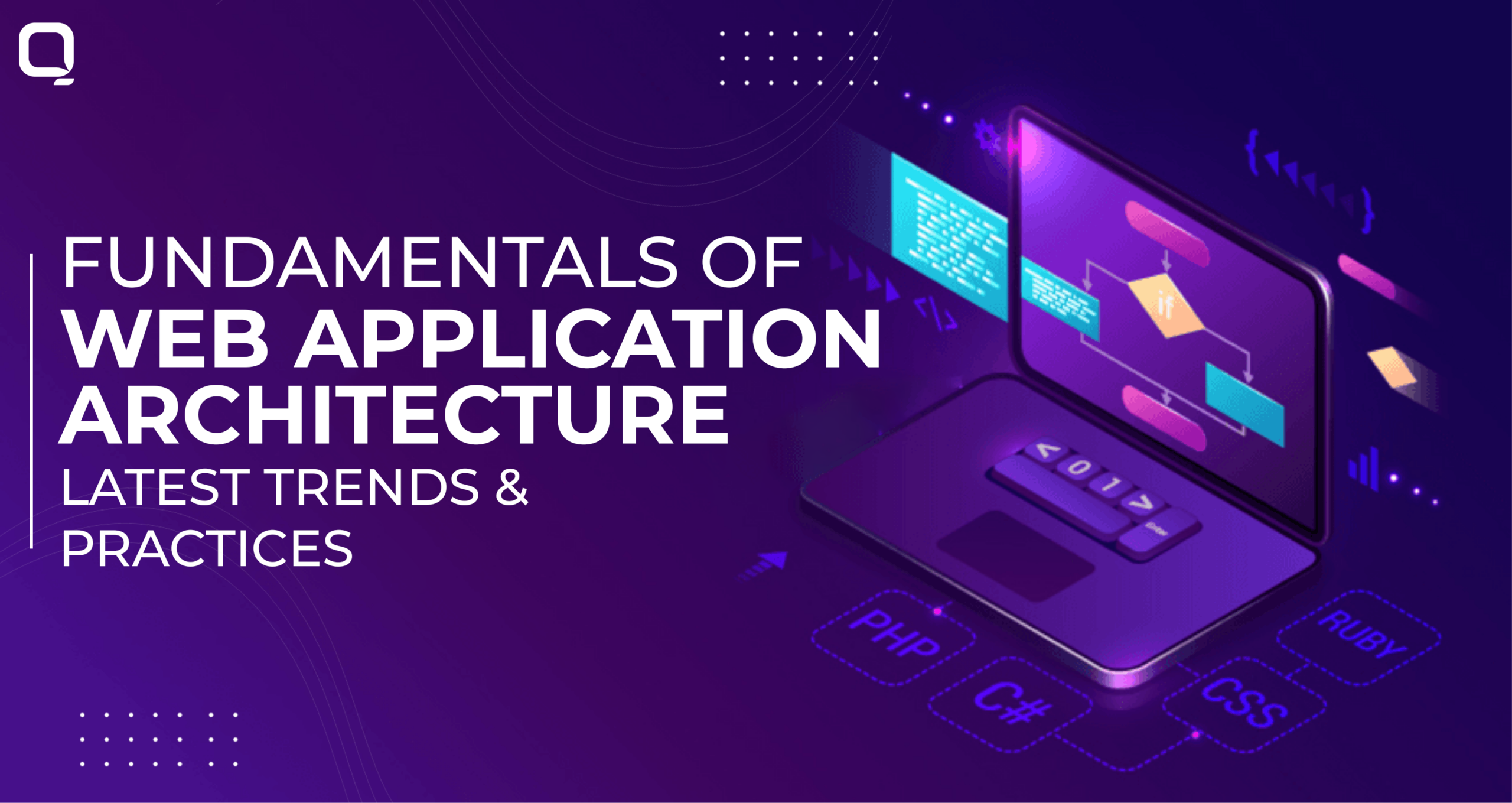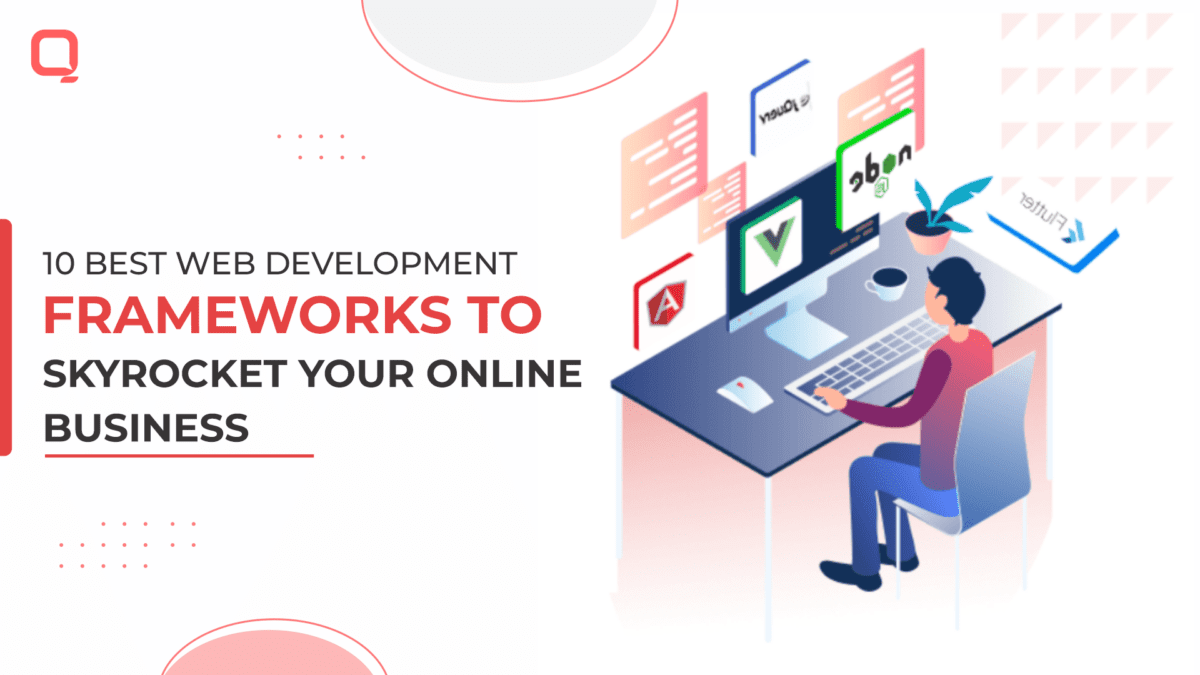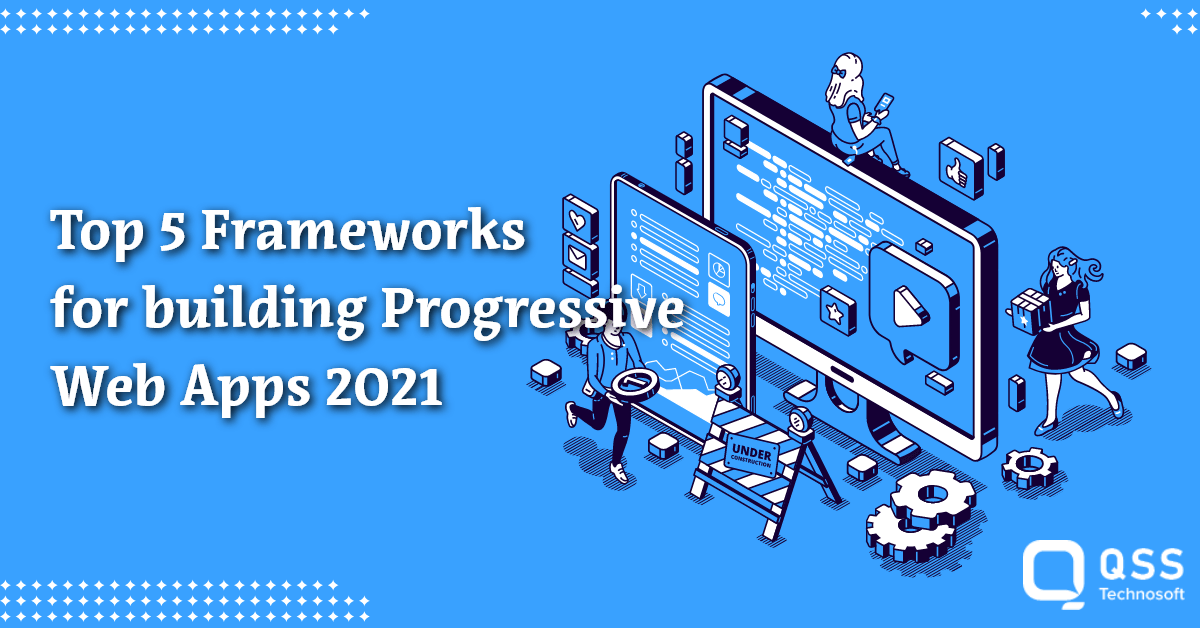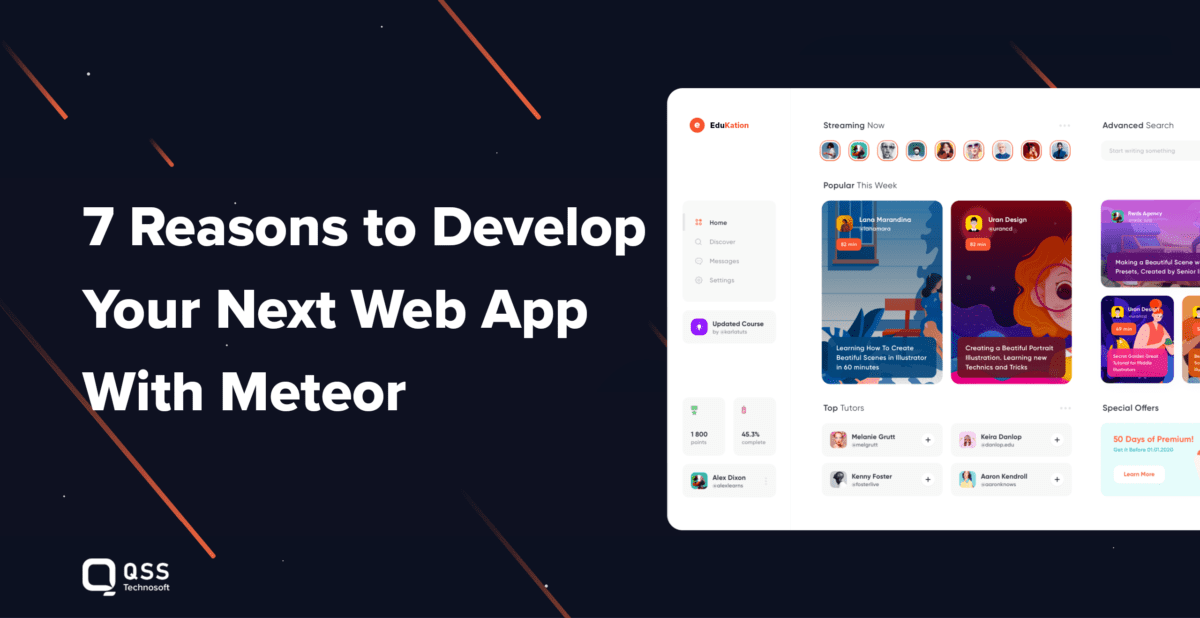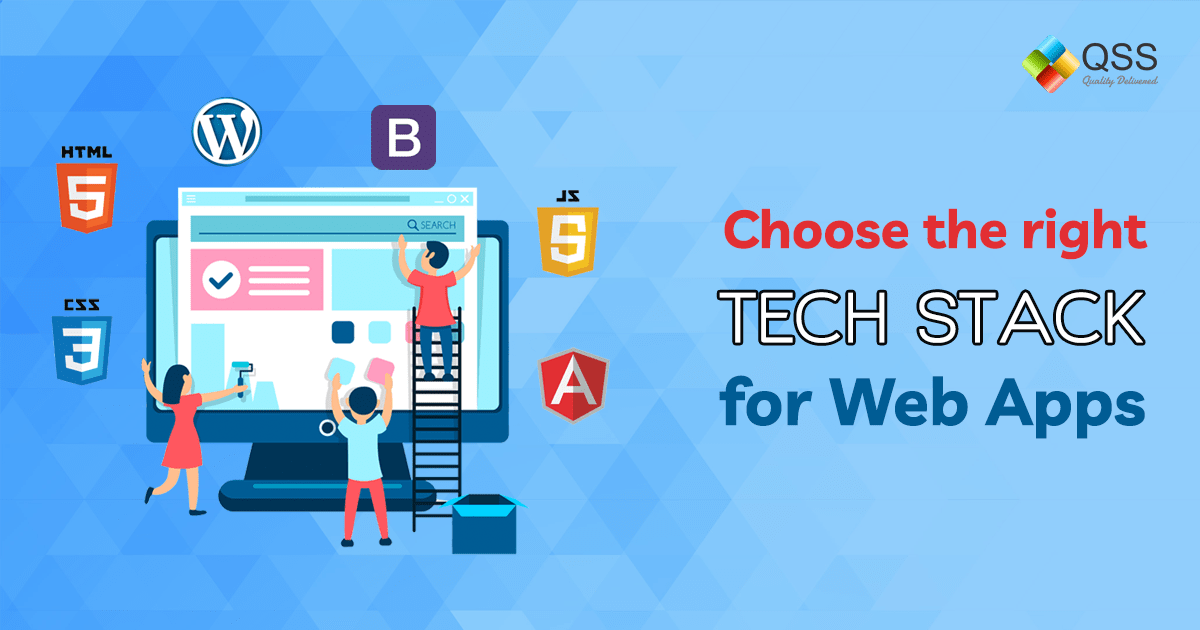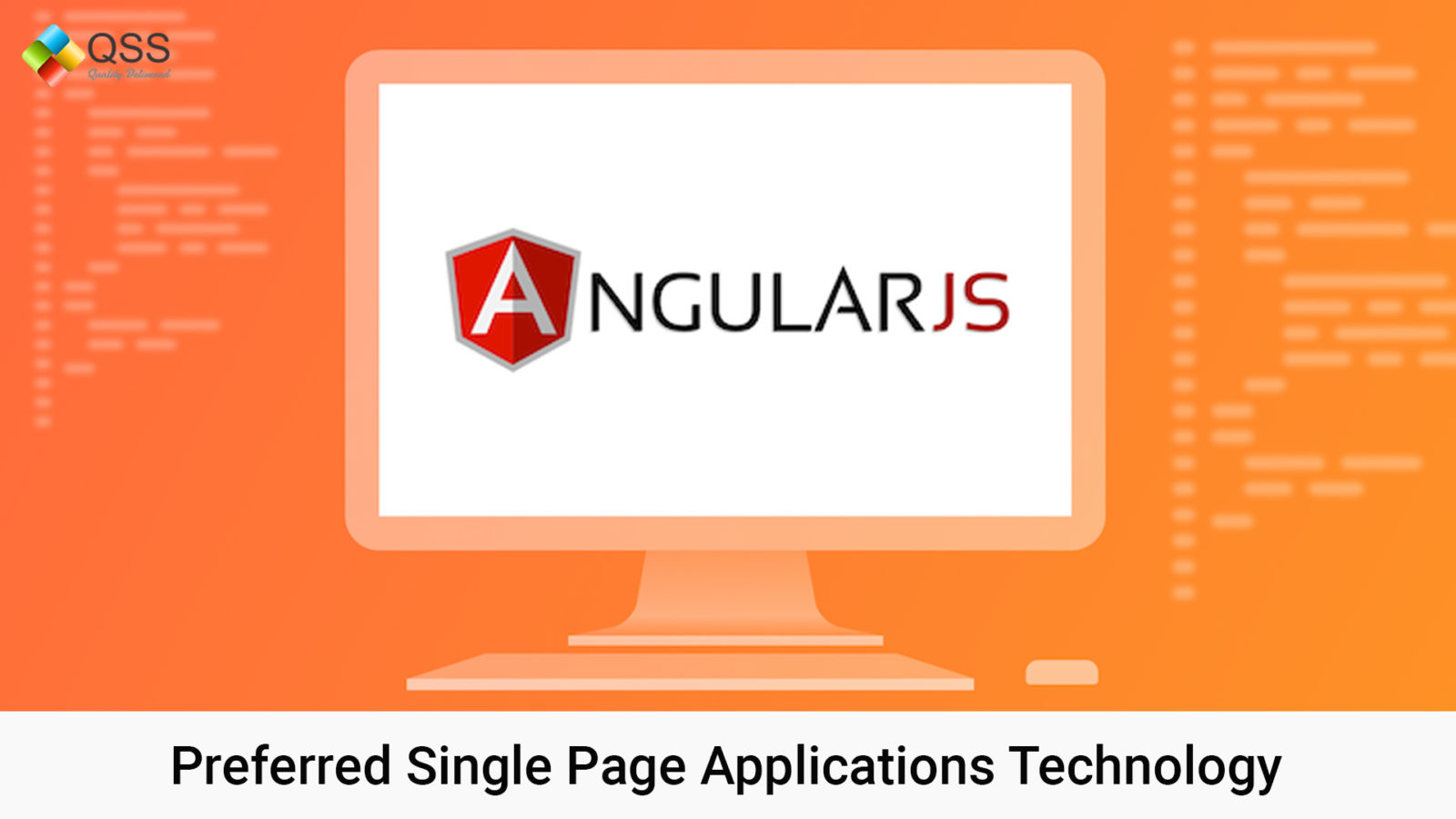Web application architecture development is a crucial step to consider if you are looking to build robust and scalable web apps for your business. With the ever-evolving technology, it’s highly recommended to stay updated with the latest trends and practices of Web architecture.
In this blog, we will explore the fundamentals of web application architecture, discuss its components and layers involved as well as highlight the latest trends. We will also share best practices to build an efficient & robust web app that ensures business success. So, let’s get started!
Web Application Architecture Overview

Web application architecture is the structure of various components that work together to deliver a functional and user-friendly web application. It consists of-
1. client-side component
2. server-side components, and
3. the communication protocols
Let’s discuss each of these components in detail below-
Components of Web Application Architecture
Client-side Components:
Client-side components in web application architecture handle the user interface, running on the client’s device (usually a web browser). They render the visual elements users interact with, ensuring a seamless user experience. These components include:
1. HTML (Hypertext Markup Language): Offers structure and markup for web pages, define the elements and their hierarchy.
2. CSS (Cascading Style Sheets): These refer to layout, colors, fonts, and animations that control the presentation and styling of web pages.
3. JavaScript: Provide functionality in web applications like event handling, DOM manipulation, and AJAX requests, enhancing the user experience.
Server-side Components:
The server-side components of web application architecture handle the processing and logic behind the scenes. They receive requests from the client-side, process data, interact with databases, and generate responses. The server-side components include:
1. Web Server: Acts as an intermediary between the client and the server-side application. It is mainly responsible for receiving client requests, processing them, and sending back the appropriate responses. Some popular web servers are Apache, Nginx, and Microsoft IIS.
2. Application Server: The application server hosts the web application. It handles tasks such as session management, security, database access, and communication with external services.
3. Programming Languages: Programming languages are responsible for enhancing the performance and scalability of the application. Common languages include Java, C#, Python, Ruby, and PHP.
4. Frameworks: Frameworks offer libraries, tools, and predefined patterns to streamline development. Examples include Django (Python), Ruby on Rails (Ruby), Spring (Java), and Laravel (PHP).
Communication Protocols:
Communication protocols ensure seamless interaction between the client-side and server-side components of a web application. The two primary protocols are:
1. HTTP (Hypertext Transfer Protocol): Considered as the foundation of web communication. It defines how requests and responses are structured, allowing the client and server to exchange information.
2. AJAX (Asynchronous JavaScript and XML): AJAX enables asynchronous communication between the client and the server, allowing for dynamic content updates without reloading the entire page. It improves the responsiveness and interactivity of web applications.
Databases:
Databases are vital for web applications, serving as the backbone for storing, retrieving, and managing data in a structured manner. Common types of databases used in web applications include:
1. Relational Databases: Relational databases (e.g., MySQL, PostgreSQL, Oracle) use tables and relationships to store structured data, making them ideal for complex data models and transaction-based applications.
2. NoSQL Databases: NoSQL databases (e.g., MongoDB, Cassandra, Redis) provide flexible and scalable storage for unstructured or semi-structured data. They are popular in applications requiring high scalability or accommodating evolving data structures.
Top Web Application Frameworks 2023

Here are the top web app frameworks that are extremely hit in 2023:
Developed by Google, Angular is a popular web application framework that helps in building dynamic and scalable apps that meet user’s needs. It uses a component-based architecture that helps in managing complex application structures. With massive community support, Angular is a top choice for large-scale enterprise applications.
React, developed by Facebook, is a widely adopted JavaScript library for building user interfaces. The technology is highly popular for building interactive and responsive web applications. It uses virtual DOM for efficient rendering. With vast community support, React is another most chosen framework by businesses & developers.
This JavaScript framework offers simplicity, flexibility, and excellent app performance. With a straightforward syntax, reactive data binding, and a component-based architecture, Vue.js is suitable for both small-scale and large-scale applications.
Django is a high-level Python web framework known for its scalability, security, and rapid development capabilities. Its features like Model-View-Controller (MVC) offer tools for better database management, URL routing, authentication, and more. This framework is an ideal choice for complex web applications.
Ruby on Rails is a full-stack web application framework that builds apps quickly with less code. It follows the Model-View-Controller (MVC) pattern and provides features like automatic database table creation, routing, and form handling. Developers are highly choosing this technology for startups and rapid prototyping.
Express.js is a light weighted Node.js framework used for building web applications and APIs. Express.js follows a middleware-based approach, allowing web developers to add functionality through a modular system. Its simplicity, speed, and extensive plugin ecosystem make it a preferred choice for building lightweight and scalable web applications.
Laravel is a popular PHP web application framework that follows the Model-View-Controller (MVC) pattern. The framework is known for its unique features like routing, ORM (Object-Relational Mapping), caching, intuitive syntax, comprehensive documentation, and authentication. Laravel’s massive community support makes it a popular choice for PHP developers.
Web Application Trends of 2023

Follow these web app trends to always remain ahead of the competition-
Progressive Web Applications (PWAs):
PWAs are a popular trend in web application development. Combining the benefits of web and mobile applications, PWAs offer users an app-like experience directly through their web browsers. PWAs are built using modern web technologies that load quickly and allow you to work offline. These apps have eliminated the need for native app development because of its cost-effectiveness and multi-device support.
Read Also: How PWA’s are Helping eCommerce Businesses
Single-Page Applications (SPAs):
Single-Page Applications (SPAs) are in trend due to their seamless user experience and improved performance. The app loads on a single web page. This eliminates the need for page reloads and the app performs even faster. These apps are built with frameworks like React, Angular, or Vue.js.
AI-ML Integration:
The integration of Artificial Intelligence (AI) and Machine Learning (ML) into web applications is highly in demand. AI and ML technologies not only enhance user experiences but automate processes and offer intelligent insights. From chatbots to image recognition and predictive analytics, web apps are leveraging AI and ML to deliver smarter and more intuitive experiences to users.
Voice User Interfaces (VUI):
With the increasing popularity of voice assistants and smart speakers, users are expecting voice-enabled capabilities in web applications. This demand is making VUI a trending technology among developers. Integrating VUI allows users to perform tasks, navigate through applications, and access information using voice commands. Incorporating voice recognition and natural language processing technologies offers users a hands-free experience.
Cybersecurity and Data Privacy:
Data security and privacy is a crucial things to be taken care of in web app infrastructure. You must implement robust security measures with stricter data protection regulations. This includes adopting secure coding practices, implementing encryption protocols, conducting regular vulnerability assessments, and ensuring data privacy compliance.
Best Practices for Web Application Infrastructure

Ensure a robust and reliable web application infrastructure for optimal performance, security, and scalability by following these best web app infrastructure practices:
Scalability and Elasticity:
Design your web application infrastructure to be scalable and elastic, capable of handling increased user traffic and growing demands. Utilize cloud-based platforms that offer auto-scaling capabilities to dynamically allocate resources based on workload fluctuations. This ensures optimal performance during peak periods and cost-efficiency during low-traffic periods.
High Availability and Fault Tolerance:
Ensure high availability of your web application by designing a fault-tolerant infrastructure. Implement redundancy at multiple levels, such as using load balancers, redundant servers, and distributed databases. Employ strategies like failover mechanisms and automatic backups to minimize downtime and maintain uninterrupted service.
Security:
Implement robust security measures to protect your web application from potential threats and breaches. Follow security best practices, such as employing secure coding practices, implementing SSL/TLS encryption for data in transit, enforcing user authentication and authorization, and regularly updating and patching software components. Conduct regular security audits and vulnerability assessments to identify and address potential vulnerabilities.
Performance Optimization:
To deliver fast and responsive user experiences, you must optimize your web app performance. Follow practices like-
- Utilize caching mechanisms
- content delivery networks (CDNs)
- optimized database queries to improve response times
- Employ compression techniques
- minify CSS and JavaScript files, and
- optimize image sizes to reduce page load times.
Monitoring and Logging:
Do implement monitoring and logging mechanisms to track the health, performance, and usage of your web application infrastructure. Make use of monitoring tools and services to gain insights related to resource utilization, response times, error rates, etc. Set up alerts and notifications to proactively address potential issues and ensure prompt resolution.
Continuous Integration and Deployment (CI/CD):
Adopt CI/CD practices to streamline the development, testing, and deployment processes of your web application. Implement automation for building, testing, and deploying code changes, enabling frequent and reliable releases. This reduces the risk of human errors and ensures consistent delivery of new features and updates.
Disaster Recovery:
Plan and implement a robust disaster recovery strategy to minimize the impact of unforeseen events on your web application. Regularly back up your data and replicate it to off-site locations to ensure data integrity and availability in case of failures or disasters. Establish recovery time objectives (RTO) and recovery point objectives (RPO) to define acceptable downtime and data loss limits.
Documentation and Collaboration:
Maintain thorough documentation of your web application infrastructure, including system architecture, configurations, and procedures. This documentation helps facilitate collaboration among team members, simplifies troubleshooting, and enables efficient knowledge transfer. Regularly update and review documentation to keep it up to date with any infrastructure changes.
Conclusion
If you are looking to build a successful web application, then you must have a solid understanding of-
- web application architecture fundamentals,
- adherence to the latest trends, and
- implementation of best practices.
Partner with one of the prominent Web development company in USA- QSS Technosoft. Our team of 250+ web developers are experts in the latest web app tools, technologies & best practices. With our massive expertise and experience, we ensure the growth and success of your web application. So what are you waiting for? Stay ahead of the curve and create a powerful web presence with the right architecture and development practices.
Contact QSS Technosoft today to unlock the full potential of your web application!
We are proud to mention that our work has been recognized by leading B2B reviews and research platforms like GoodFirms, Clutch, MirrorView, and many more.
